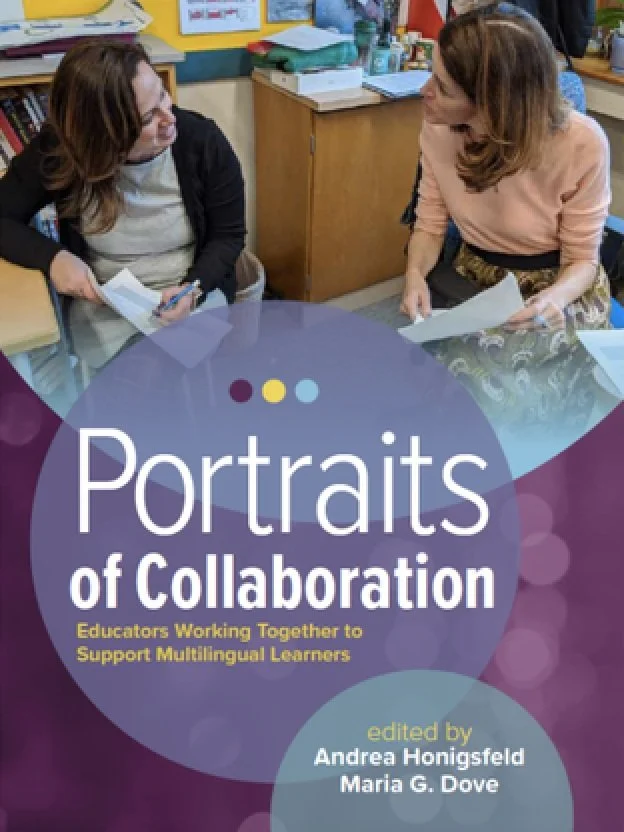#6: Building Collaborative Teams
“The most effective collaborations are those where personal ego has been set aside and encourage individuals to support and build one another up.”
Recommended Book:
Portraits of Collaboration: Educators Working Together to Support Multilingual Learners. Edited by: Andrea Honigsfeld and Maria Dove
Synopsis: This edited volume written by teams of educators from around the world, highlights the importance of working together to achieve a common goal. While written from an education perspective, each chapter highlights various dimensions that collaboration includes. Additionally, it offers practical application strategies and authentic examples for teams and partners to engage in for successful collaborative practices.
Be sure to check out the chapter my co-author and I wrote, chapter 5: “Relationship Building: Tending to a Shared Plot of Land”, as we share our insights about how to build a collaborative partnership.
Teamwork- a soft skill that is more integral in today’s world than ever, yet how do we create effective teams and encourage collaboration?
When I was an educator in the classroom, my units of study were based around conceptual learning. As often as possible, I would incorporate project based learning in which concepts could be applied in ‘real world application’; teamwork and collaboration were 2 key ingredients for success.
At the beginning of the year I would have students take a strengths finder assessment to determine their learning strengths. After placing the broad categories around the room, I’d have them put their photo under the heading that best described their learning strengths.
As they hung their photos there was often a lot of chatter as they shared their surprise for the strengths that were revealed. At the end I would share that we all have strengths and its important to not only be aware of our core strengths, but also what the others around us are bringing to the table as well; however, this doesn’t mean that the other areas we can’t grow in or also have as a co-strength.
For the rest of the year, as students worked on various projects they were to create their teams thinking about the strengths that each other could bring. Students were free to select their own teammates with one caveat: once they worked with one individual on a project, they could not work with that individual again on any further projects.
Often in a work environment, we don’t have the ability to choose the team we are placed on. Most of the time, we enter into teams already formed. Some of these teams are highly successful and others not as much. What I have observed is that team success boils down to how we relate to one another. This impacts our willingness and ability to collaborate.
In the book, Portraits of Collaboration, my co-author and I wrote a chapter around collaboration entitled, “Relationship Building: Tending to a Shared Plot of Land”. In this chapter we share our insights around building effective collaborative partnerships. We posit that collaboration is a process, not an end result. It’s on-going work that requires intentionality, trust, and consistency.
It requires “soft skills” such as:
active listening- putting aside distractions and listening without the need to promote our own agenda
vulnerability- putting yourself out there and being open to not knowing all the answers
understand what others value- by doing this, we can understand one another’s priorities and motivations
intentionality- intentionality fosters trust as teams recognize that decisions and actions are made to ensure future success
The most effective collaborations are those where personal ego has been set aside and encourage individuals to support and build one another up.
Returning back to the classroom, did this approach towards creating teams build the collaboration skills I was seeking for students to grow in? Yes, but not always in the most conventional ways if you just glanced in.
At the beginning of the year students were excited as they choose to work with their ‘besties’- often these teams realized by the end, time management and staying focused had been problematic. While they enjoyed each others’ company, perhaps not working together was actually more beneficial than they thought. Instead, collaboration took the form of study groups to bounce ideas off of each other even when they weren’t working closely together.
By mid-year students were having to step out of their comfortable bubble to reach across the room and work with people they wouldn’t normally speak to. New acquaintances were made, some became good friends, and there was increased recognition that our classroom was a lot richer because of the strengths that each person was bringing to our course.
The person who always seemed to voice a different position than the majority was no longer met with an eye roll; instead they were seen as someone who could ‘think out of the box’ and offer an alternative perspective. The quiet artist who never spoke was seen as someone who could create visuals to convey stronger messages than just words. The class joker became someone who could add humor to a presentation and help people relax.
By the last quarter of the year, students were strategic in who they were selecting and intentionally seeking specific skills to compliment their own. I’d see students looking over a project and identifying what skills they’d need to be successful. The day of group creations I would hear comments such as, “We’re looking for someone creative in writing, as we already have someone artistic and good with tech,” or “No, we need that person or someone like them because they’re good in project management and can help us stay organized”.
Building strong, collaborative teams on the outside appears easy. In reality, there are hours of behind the scenes work that few recognize; yet for teams to flourish, collaboration is essential. A collaborative atmosphere encourages open communication, builds trust, and allows team members to leverage each other's strengths effectively. When individuals feel valued and empowered to share their ideas, creativity flourishes, leading to enhanced productivity and innovative solutions.


